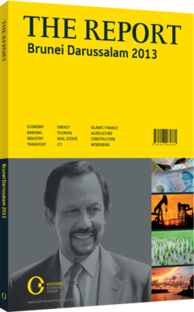Credit where it is due: A new bureau is expected to help target lending and improve portfolios
The biggest development in Brunei Darussalam’s banking sector over the past 12 months is likely the arrival of a new credit bureau. Having begun operations in the fourth quarter of 2012, the bureau is the key tool of Autoriti Monetari Brunei Darussalam (AMBD) for lenders to determine their potential customers’ credit-worthiness. Following on from the work of the Ministry of Finance (MoF), which introduced a number of regulations to curb personal lending, the AMBD, established to take over the role of regulator from the ministry at the beginning of 2011, is keen to reduce personal indebtedness in the Sultanate and improve the asset quality across the sector. Although research into the establishment of credit bureaus around the globe have come to contradictory conclusions, there is a general sense that such bureaus improve asset quality.
CREDIT BUREAU: Indeed, the development of the credit bureau has been met positively by many of the major players in the sector. Javed Ahmad, the managing director of Bank Islam Brunei Darussalam, told OBG that the banks have been playing a “guessing game” to this point. The new bureau should ensure that credit worthy customers are able to get better access to financing. Lai Pei-Si, the CEO of Standard Chartered Brunei, told OBG, “It will give us a lot of information on clients and help us to customise products for our customers and price them accordingly. At the moment, we cannot customise products.”
As such, the bureau could help banks provide better services and potentially better terms to individual consumers and businesses. Whether it will have a noticeable influence on the pricing of loans has yet to be seen and it is likely that most banks will not been drawn by this. According to Vincent Ho, the CEO of HSBC Brunei, “[Creating the bureau] is the first step in the right direction and will help establish the highest standards in risk management across the board. If it all works to plan, it should create more opportunities as a result of the better information.”
In 2011, Lai suggested that the introduction of a new bureau could have a moderating impact on consumer behaviour, a development that would certainly be welcomed in a country with relatively high levels of personal indebtedness. “You will see consumers being more responsible in their borrowing, as it affects them directly and they know the information is available across the board. It will therefore help them be more prudent in lending and more aware of what they are doing,” said Lai.
ASSET QUALITY: The hope is that it will also improve the asset quality across the sector. While the AMBD rules limiting the exposure of the banks to personal loans (to 30% of their total portfolio) and new limits and regulations on credit card usage have already helped lower the risk exposure of the banking sector, challenges remain. According to IMF data, the gross non-performing loan ratio stood at 9% at the end of 2011, a half-percentage point increase on the ratio at the end of 2010, but less than the 11.2% at the end of 2009. Findings from the establishment of credit bureaus elsewhere suggest mixed results for improving the performance of the sector’s loan portfolios. According to a report by McKinsey, the non-performing loan ratio in Shanghai fell from 6.67% to 4.52% in the 12 months following the launch of a local credit bureau in 2002. The same report also found that default rates in Argentina in 2004 fell by 41% for large banks and by 79% for small banks as a result of a credit bureau.
However, a 2009 empirical study by academics Craig McIntosh at the University of California San Diego and Bruce Wydick at the University of San Francisco found that credit bureaus tend to lead to credit expansion, which actually has the effect of increasing default rates. In Brunei Darussalam, however, considering the recent limits put in place on consumer lending, there is unlikely to be a credit expansion that could fuel higher default rates, at least across the individual consumer product segment.
You have reached the limit of premium articles you can view for free.
Choose from the options below to purchase print or digital editions of our Reports. You can also purchase a website subscription giving you unlimited access to all of our Reports online for 12 months.
If you have already purchased this Report or have a website subscription, please login to continue.

